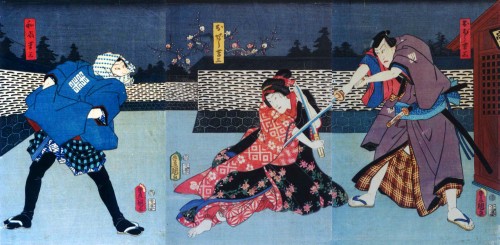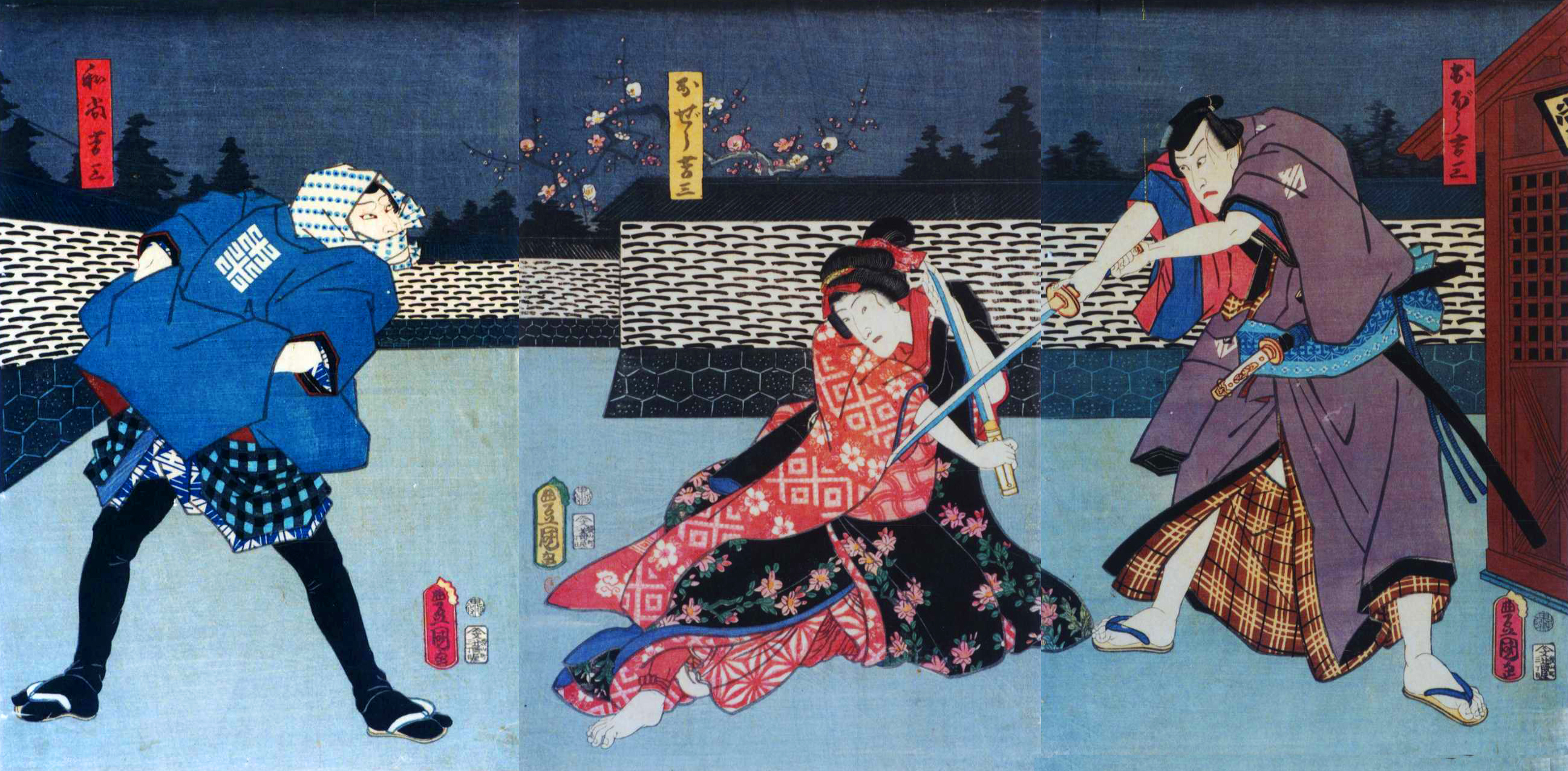
Kabuki is a traditional form of theatre in Japan which began around four hundred years ago. It is a highly stylized form of theatre, and its use of props is very formalized and full of tradition. I thought it would be interesting to take a look at how they use and make props in Kabuki. I don’t speak or read Japanese, so while I took care to double and triple-check all the terminology, someone more knowledgeable than I may still find mistakes. Still, I hope you’ll find what follows to be a good overview of props in Kabuki theatre.
Terminology
The word for props is å°é“å…·, or kodÅgu. Kabuki distinguishes between different categories of props just like those of us in English-speaking countries. If you need a refresher, check out my article on the different categories of props, as well as an illustration of these categories. Hand props are called æŒã¡é“å…·, or mochidÅgu. MochidÅgu include accessories, swords and other weapons, fans and armor (or yoroi); basically, everything which is portable. Set props, such as furniture, set dressing and other items left on stage for the duration of the performance, are known as dedÅgu. Large props are named 大é“å…·, or ÅdÅgu. In the US, we would consider ÅdÅgu to be scenery; indeed, the Japanese treat it as a separate department as well, with different technicians involved, so we will not spend any more time on it here.
Props which are used up at each performance (consumables and food) are called kiemono. Props which are broken and destroyed each performance are kowaremono. Vehicles and portable shrines are known as norimono. Rigged and trick props are called shikake, or shikake mono. A great example of a shikake mono is a branding iron with a button-activated electric filament which ignites a match head to produce a puff of smoke. Red paint on the iron also serves to leave a red mark on the actor being branded (McNicol 33). Kabuki also considers several other items to fall under the realm of props, such as animal costumes (nuigurumi), footgear (hakimono) and headgear. Unlike in the US, snow, snowflakes and artificial blossoms (tsuri eda) are responsibility of ÅdÅgu, rather than the prop makers (Scott 155).
Among the most difficult props to make are the decapitated heads, known as 首 (kubi) or kirikubi. Kubi are divided up into dakubi, or “low-class” head, and jÅkubi, or “high-class” head. Dakubi are usually cotton forms stuffed with wood shavings, sometimes covered in Japanese paper, with crudely painted features and hair. The neck may have a piece of red cloth attached. JÅkubi are more realistic and well-made. They can be carved out of oak or paulownia wood, or made of papier-mâché over a wooden base (hariko no kubi). The construction of these were reserved for master carvers, who attempted to capture the exact likeness of whichever actor it was supposed to represent. Examples of jÅkubi from the Meiji era (1868-1912 CE) still remain in existence at the Fujinama warehouse (more on Fujinama in a bit). Continue reading Kabuki Props

